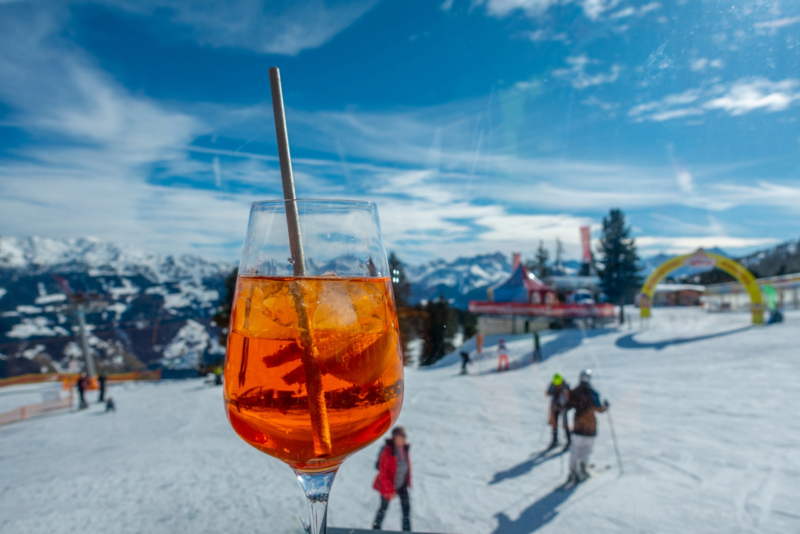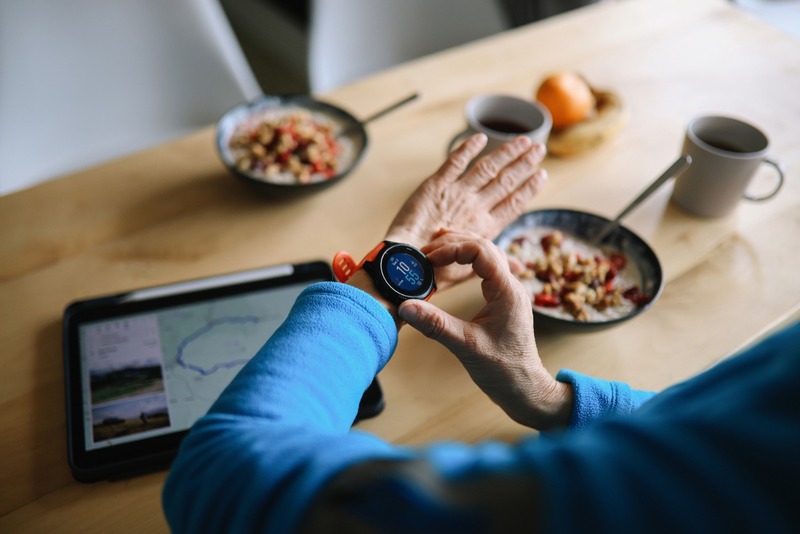News
Heart Attack on Vail Mountain
It was a stunning day on Vail Mountain that Lee Olch won't ever forget.
In March 2015 Olch and a friend were enjoying early morning turns under a quintessential bluebird sky. The snow conditions were ideal and they'd even managed to beat most of the crowds. It was nothing short of a perfect day on the slopes for Olch a then-new retiree from Seattle who had bought a condo in Lionshead with his wife in 2013.
It was just a glorious day Olch remembered. It had snowed a few days before and we had it all to ourselves.
After several runs Olch headed inside for a short break. He drank the water he had brought with him and noticing he was still thirsty he drank some more from the water fountain.
That's when he noticed something wasn't quite right. Something felt a little off he described.
Given his history he didn't take any chances and walked himself right into Ski Patrol Headquarters.
About a year and a half earlier Olch had suffered a heart attack during the summer. He was an otherwise healthy guy and even after his first heart attack he performed at the level of an 18-year-old on his stress test. He was 65 at the time and his excellent physical condition contributed to his survival and recovery. To this day his doctors in Seattle and Vail agree: he had hardly any warning signs before the sudden onset of pain at Vail. He was determined to avoid another attack and still says his experience on that gorgeous day caught him off guard.
I asked Dr. Greenberg what was the possible cause of my heart attacks Olch recalled. His response was: if I knew I would have won the Nobel Prize in medicine. My Seattle doctor had earlier also confirmed that the cause was unknown.
Olch began describing his symptoms to Brice May a Ski Patroller on duty including his history of heart attack and suddenly the pain turned unbearable. That was all it took for patroller May to call Vail Valley Medical Center and get Olch in a toboggan.
Then it just hit Olch said. I had this massive pain in my throat and chest. I'd be dead but these guys were just incredible. The next thing I knew the patroller was helping me outside and they already had the sled for me.
Due to the pain it felt like the longest run of Olch's life even though it only took about 20 minutes in real time and the patrollers made a call to take the more direct route down Tourist Trap to save time.
Those guys hauled a** said Olch. It felt like an hour but in my head I knew they had the pedal to the metal. Those guys really saved my life right there.
During the ride he had no idea that the patrollers were taking him to Vail Valley Medical Center's newest addition: a cardiac catheterization lab built and designed for severe cardiac emergencies like an on-mountain heart attack. It had opened on February 26 2015 just days before Olch's incident and he was the unit's second heart attack patient.
It was absolutely a miracle that the lab was open on that day said Olch. If it had not been the only thing they really could've done was put me in a helicopter and send me to Denver. I would've been dead by then. The cath lab virtually saved my life and I believe that 100 percent.
Heart first
VVMC's cath lab might only be one year old but it's supported by seasoned professionals experts in their field.
Since opening last February the lab has been staffed with two full-time cardiologists Dr. Nelson Prager and Dr. Jerry Greenberg. The two boast more than four decades of combined cardiology experience.
They had years and years of experience in their fields Olch said about the cath lab staff. It was kind of like an NBA All-Star game: They'd never quite played together but when they're all firing on the same cylinders at the same time they make incredible things happen.
In just one year the cath lab has seen 64 cardiac cath or coronary angiogram cases not counting pacer implants or electrophysiology tests. Of those cases 28 patient received stents and eight of those patients recovered from heart attacks.
For doctors and patients alike the lab is critical. It offers everything you'd find in a cath lab in a major metropolitan area stents angioplasty balloons and other life-saving intervention to open blocked arteries as well as implantable cardioverter defibrillator (ICD) and pacemakers for patients with abnormal heartbeats or arrhythmias and it sits right at the base of Vail.
The big difference is we can actually treat (heart attack) patients here explained Dr. Prager. They don't have to leave the Valley to get the treatment they need. It's a huge improvement and convenience.
For Olch the doctors had to sandwich the stent he received after his first heart attack in 2013 by adding a new stent inside. If it had happened just a week earlier he would have had to take a flight or ambulance ride to Denver for treatment and surgery. Even that might not have helped: Olch's Seattle doctor told him that sudden heart attack victims have 90 to 120 minutes before it would be over Olch said. The new cath lab is the difference between life and death for a case like mine which Olch said he was told constitutes 30% of all heart attacks.
After rehabilitating with VVMC's Cardiac Rehab program which he called phenomenal Olch is back on the slopes. He's got about 60 days in this season so far and between surviving two heart attacks and pursuing his passion for skiing he says I'm so lucky it's unbelievable.
Did you know?
February is American Heart Month and Vail Valley Medical Center is raising awareness through education events and more all in the name of better heart health.
What you need to know about your body's best friend:
- Heart disease kills 1 in 3 women.
- Heart disease kills more Americans than all types of cancer combined.
- Heart disease kills more men than women.
- Risk factors for heart disease: weight activity blood pressure cholesterol blood sugar control smoking stress management. You can control all of them.
- Signs of a heart attack: chest discomfort or pain pain and discomfort that extend to your upper body (one or both arms back neck stomach teeth and jaw) lightheadedness indigestion and unexplained fatigue.
- Signs of abnormal heart rhythms (arrhythmia): a fluttering in the chest a racing heartbeat (tachycardia) a slow heartbeat (bradycardia) chest pain shortness of breath lightheadedness dizziness and fainting (or near fainting).
About Vail Valley Medical Center
Founded in 1965 VVMC has grown into one of the world's most advanced mountain healthcare systems providing 24/7 emergency care Olympic-quality sports medicine evidence-based research modern cancer care and extensive cardiology services. An independent nonprofit medical center VVMC keeps nearly 900 jobs and resources local better serving our community and visitors. Providing superior health services with compassion and exceptional outcomes VVMC offers low infection rates free community services and top-rated patient satisfaction scores.
Cardiology Institute | www.vvmc.com/cardiology | (970) 476-1110
Dr. Jerry Greenberg & Dr. Nelson Prager Cardiology Institue
More News
-
New!
More

First Chair to Last Call: What Does Alcohol Really Mean For Your Health?
In nearly every Colorado ski town, some iteration of the neon sign blares its play-hard-party-harder anthem. It’s a not-so-subtle nod to mountain party culture, a lifestyle that normalizes combining sports and outdoor adventures with heavy drinking and partying. In Eagle County, après culture, high-altitude living and outdoor performance have coexisted for as long as locals have been sliding on snow. But how much is too much at altitude? And what role do social support systems play in helping residents find balance?
-
New!
More

Counting More Than Steps: How Wearables Can Help (or Hinder) Your Health
From step counts to sleep stages, heart rate variability to blood sugar spikes, wearable devices are giving us a front-row seat to what’s happening inside our bodies. Strapped to wrists, slipped onto fingers or wrapped around our biceps, wearables like the Oura Ring or Whoop strap promise insight and advice in the quest for better health.
-
More

Cass Barham and Sarah Crabtree Honored As Recipients of Vail Health Elevate Award
Cass Barham and Sarah Crabtree, both lab techs at Vail Health Hospital, have been named recipients of the Vail Health Elevate Award. Vail Health created the Elevate Award in June 2022 to give patients and their families an opportunity to nominate and thank employees who have touched their lives in some way.
